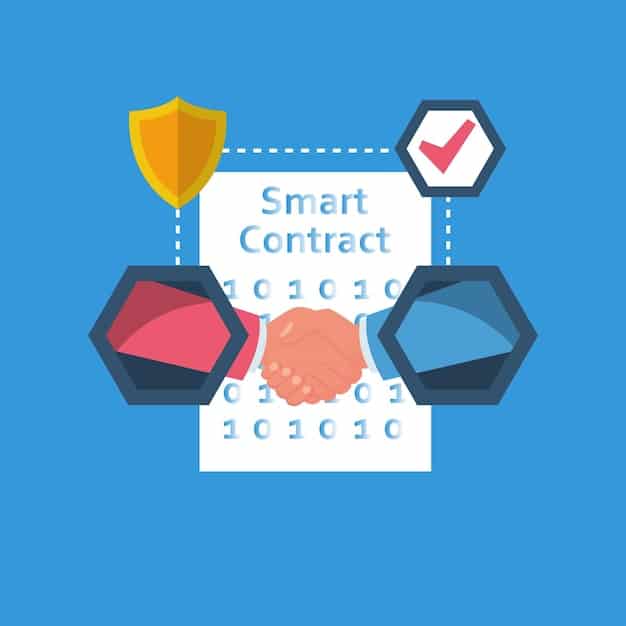Smart Contract Upgradability: Flexible Code Updates in Blockchain

Smart contract upgradability refers to the ability to modify and improve smart contract code after deployment on a blockchain, essential for adapting to new requirements, fixing bugs, and enhancing functionality while minimizing disruptions to users and maintaining the integrity of the decentralized system.
In the ever-evolving world of blockchain technology, smart contract upgradability is a critical aspect of maintaining robust and adaptable decentralized applications. Ensuring that smart contracts can be updated and improved without compromising security or user experience is paramount.
Understanding the Need for Smart Contract Upgradability
Smart contracts, once deployed on the blockchain, are immutable. This can present a challenge when bugs are discovered, new features are needed, or changes in regulations require code modifications. This is where upgradability becomes essential, allowing developers to adapt and improve their contracts while mitigating risks.
Upgradability addresses the inherent inflexibility of immutable smart contracts. Without it, contracts would become obsolete or vulnerable, hindering innovation and adoption.
The Immutable Nature of Smart Contracts
The immutability of smart contracts ensures transparency and security, but also poses limitations when changes are necessary. Upgradability mechanisms are designed to circumvent these limitations in a controlled and secure manner.
Challenges with Non-Upgradable Contracts
Non-upgradable contracts can lead to significant problems, including the inability to fix critical security vulnerabilities or adapt to changing business needs. This can result in loss of funds, compromised functionality, and ultimately, a lack of user confidence.

Consider these key benefits of smart contract upgradability:
- Mitigating Bugs: Enables quick fixes for vulnerabilities.
- Adapting to Change: Allows integration of new features and regulatory changes.
- Prolonging Lifespan: Keeps contracts relevant and functional over time.
In summary, smart contract upgradability is a crucial feature for any blockchain project seeking longevity and adaptability. It balances the need for immutability with the practical requirements of real-world applications.
Proxy Patterns: A Common Upgradability Solution
Proxy patterns are a popular method for implementing upgradability in smart contracts. This involves separating the contract’s logic (implementation) from its state (data) and using a proxy contract to redirect calls to the latest version of the implementation.
Proxy patterns offer a flexible way to upgrade contracts without migrating data or disrupting existing functionality.
How Proxy Contracts Work
A proxy contract acts as an intermediary, forwarding calls to an implementation contract. When an upgrade is needed, the proxy is pointed to a new implementation contract, leaving the data intact.
Types of Proxy Patterns
There are several types of proxy patterns, including:
- Transparent Proxy: Uses different functions for data and logic.
- Delegate Proxy (EIP-897): Forwards all calls to the implementation.
- UUPS (Universal Upgradeable Proxy Standard): Minimizes deployment costs.
Implementing a proxy pattern requires careful attention to detail to avoid potential security vulnerabilities. Common pitfalls include storage collisions and initialization issues.
Data Migration Strategies During Upgrades
Data migration is a critical aspect of smart contract upgrades. When moving from one implementation to another, it’s essential to ensure that the contract’s data remains consistent and accessible.
Effective data migration strategies are vital for maintaining the integrity and functionality of the smart contract during upgrades.

In-Place vs. Side-by-Side Migration
In-place migration updates the data directly in the contract’s storage, while side-by-side migration creates a new storage structure. Each approach has its own tradeoffs in terms of complexity and performance.
Techniques for Ensuring Data Consistency
To ensure data consistency, consider these techniques:
- Data Validation: Verify data integrity after migration.
- Backup and Recovery: Create a backup of the data before migration.
- Incremental Migration: Migrate data in smaller batches to reduce risk.
Data migration can be complex, but with careful planning and the right strategies, it can be performed safely and effectively.
Security Considerations for Upgradable Contracts
Upgradable smart contracts introduce additional security considerations beyond those of traditional immutable contracts. Ensuring the upgrade process itself is secure is paramount to avoid vulnerabilities.
Addressing these security considerations is crucial for maintaining user trust and the integrity of the blockchain application.
Potential Attack Vectors
Some potential attack vectors include:
- Unauthorized Upgrades: Ensuring only authorized parties can initiate upgrades.
- Storage Collisions: Avoiding conflicts between storage layouts in different implementations.
- Delegatecall Vulnerabilities: Properly handling delegatecall to prevent malicious code execution.
To mitigate these risks, consider implementing multi-signature schemes for upgrade authorization and rigorously testing upgrade procedures.
Governance and Upgrade Authorization
Governance mechanisms play a key role in determining how and when smart contracts are upgraded. These mechanisms define the rules and processes for proposing, approving, and executing upgrades.
Robust governance ensures that upgrades are performed in a transparent and accountable manner, reflecting the interests of the community.
On-Chain vs. Off-Chain Governance
On-chain governance involves using smart contracts to manage upgrade decisions, while off-chain governance relies on community consensus and voting outside the blockchain.
Role of Token Holders in Upgrade Decisions
Token holders often have a say in upgrade decisions, either through direct voting or by delegating their voting power. This helps ensure that upgrades are aligned with the community’s desires.
Effective governance ensures that upgrades are both technically sound and democratically approved.
Practical Examples of Upgradable Smart Contracts
Many real-world blockchain projects utilize upgradable smart contracts to maintain flexibility and improve their functionality over time. Examining these examples provides valuable insights into best practices.
These practical examples highlight the versatility and importance of upgradability in addressing real-world challenges.
Case Studies of Successful Upgrades
Examples include:
- Stablecoins: Upgrading to improve stability mechanisms.
- Decentralized Exchanges: Adding new trading features.
- Governance Protocols: Enhancing voting functionality.
Common Mistakes to Avoid
Avoid these common mistakes:
- Failing to properly initialize new implementations.
- Neglecting to conduct thorough testing.
- Ignoring community feedback during the upgrade process.
By studying successful examples and learning from past mistakes, developers can implement robust and secure upgradable contracts.
Future Trends in Smart Contract Upgradability
The field of smart contract upgradability is constantly evolving, with new techniques and best practices emerging to address the challenges of maintaining and improving blockchain applications.
Staying abreast of these trends is essential for developers seeking to build cutting-edge and adaptable solutions.
Emerging Technologies
Some emerging technologies include:
- Formal Verification: Using mathematical proofs to ensure upgrade correctness.
- Layer-2 Scaling Solutions: Integrating upgradability with scaling techniques.
- AI-Powered Upgrade Automation: Automating certain aspects of the upgrade process.
The Impact of Blockchain Interoperability
Blockchain interoperability is also influencing upgradability, enabling cross-chain upgrades and facilitating seamless integration between different blockchain platforms.
The future of smart contract upgradability will likely involve a combination of these emerging technologies and interoperability solutions, further enhancing the flexibility and resilience of blockchain applications.
| Key Point | Brief Description |
|---|---|
| 🔑 Upgradability | Modifying smart contracts post-deployment. |
| 🛡️ Proxy Patterns | Separating logic from data for flexible upgrades. |
| 🔄 Data Migration | Techniques for consistent data during upgrades. |
| ✅ Governance | Mechanisms for upgrade authorization and execution. |
Frequently Asked Questions
Upgradability allows smart contracts to adapt to new requirements, fix bugs, and evolve without compromising security or functionality, ensuring long-term viability.
Proxy patterns separate the smart contract’s logic from its storage, enabling upgrades by pointing the proxy to a new implementation while preserving the data.
Data migration ensures that existing data is transferred and remains consistent between the old and the new contract versions through in-place or side-by-side migration techniques.
Security considerations include preventing unauthorized upgrades, avoiding storage collisions, and mitigating delegatecall vulnerabilities to ensure the upgrade process is secure.
Governance mechanisms dictate how upgrades are proposed, approved, and executed, often involving token holders in voting or delegation to align with community interests.
Conclusion
Smart contract upgradability is an essential feature for modern blockchain applications, allowing for flexibility, adaptability, and long-term viability. By implementing appropriate proxy patterns, data migration strategies, and governance mechanisms, developers can ensure their contracts remain secure, functional, and responsive to evolving needs.





